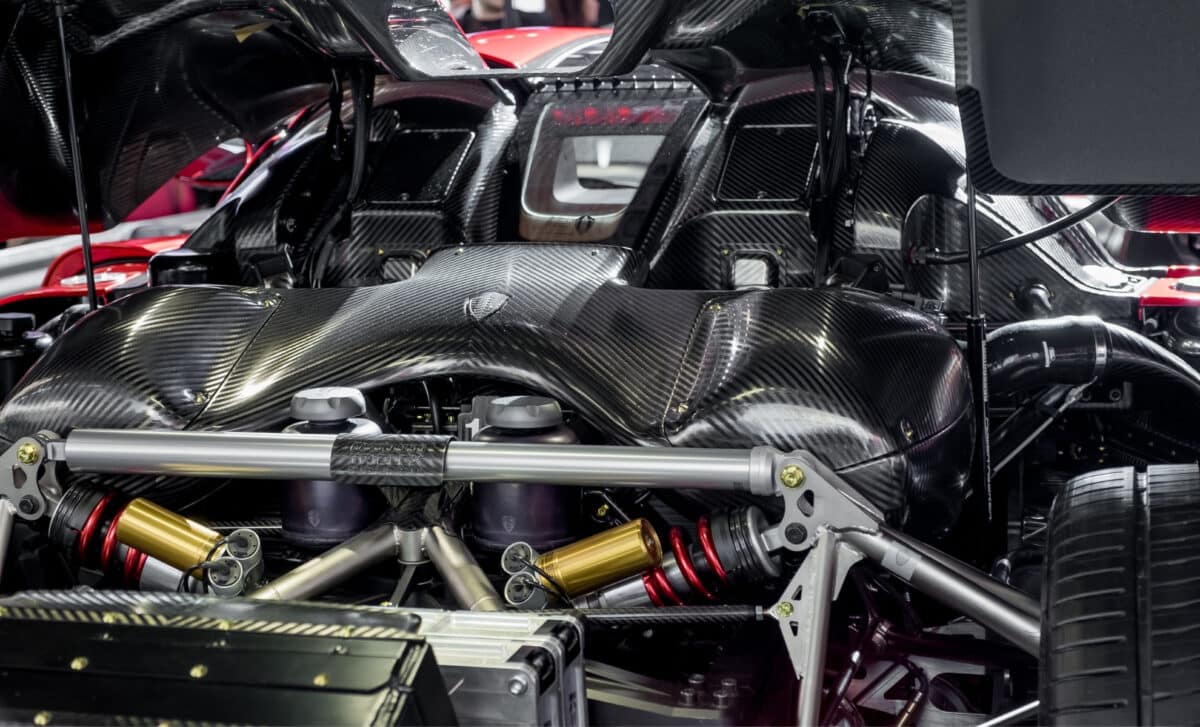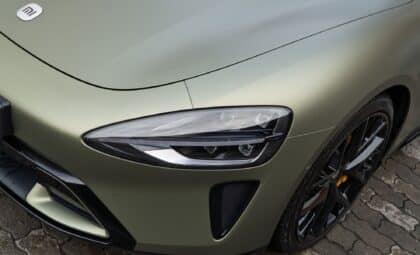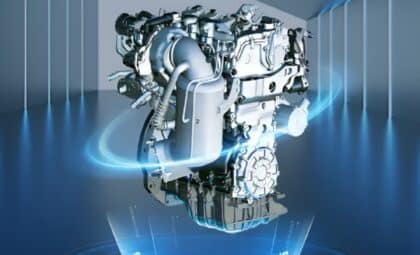Since the Bugatti Veyron broke the 1,000 PS barrier in 2005, the automotive industry has entered what some call the “horsepower wars.” Once unimaginable power levels are now being offered by factory-built cars available — at least technically — to the public. Some use traditional internal combustion, others pair it with electric motors, but all ten entries in this ranking showcase the extreme diversity in engineering approaches.
The list compiled features hypercars and supercars from brands such as Koenigsegg, Bugatti, and SSC, and includes several hybrid powertrains. From Sweden to Texas, and from traditional V8s to innovative V12s and W16s, the engines on this list reflect the global nature of this technological race. Each engine represents a moment when a manufacturer redefined what was possible — on paper, on the track, and in the showroom.
Koenigsegg Leads with Hybrid V8 Power
According to Carbuzz, the most powerful production engine ever fitted to a street-legal car belongs to the 2025 Koenigsegg Gemera HV8, producing 2,269 horsepower and 2,028 lb-ft of torque. It pairs a 5.0-liter twin-turbo V8 with a plug-in hybrid system and direct drive transmission, pushing the Swedish car to a top speed of 278 mph. The original Gemera was already powerful, but this updated version pushes into new territory.
Koenigsegg claims the V8 used in the Gemera HV8 is derived from the Jesko’s engine and works in tandem with the company’s Light Speed Transmission. What’s notable is not only the headline horsepower but the AWD layout, allowing the car to transfer power more efficiently and making it more usable on regular roads.
The Swedish manufacturer dominates this ranking, with four entries in the top ten, including the Jesko (1,603 hp), Regera (1,500 hp), and One:1 (1,341 hp). Each model introduces a different take on extreme power — from hybrid torque-fill to ultra-light components and simplified drivetrains.
American Hypercars Push the Limits of Raw Output
The Hennessey Venom F5, powered by a 6.6-liter twin-turbo V8, is the most powerful non-hybrid engine on the list with 1,817 horsepower and 1,193 lb-ft of torque, as reported by Carbuzz. Built by Hennessey Specialty Vehicles in Texas, the F5 is a bespoke hypercar aiming for the 300 mph mark, with a 0-60 mph time estimated at 2.6 seconds. Unlike some European rivals, it keeps a rear-wheel-drive layout and uses a 7-speed automatic transmission.
Another American entry is the SSC Tuatara, which uses a 5.8-liter twin-turbo V8 to generate 1,750 horsepower and 1,322 lb-ft of torque. It gained attention not only for its ambitious top speed claims — which were later retracted — but for its flat-plane crank, 8,800 RPM redline, and aggressive aerodynamic setup. SSC aimed to build one of the most extreme hypercars ever sold in the US.
Also notable is the Chevrolet Corvette ZR1X, delivering 1,250 horsepower from a 5.5-liter twin-turbo V8 hybrid system. It features AWD, eight-speed automatic transmission, and a blistering 0-60 time of 1.9 seconds. The ZR1X is especially relevant because it will be sold through Chevrolet’s national dealer network, unlike most other cars on the list.
Exotic Engineering Defines Europe’s Contribution
Bugatti’s Chiron Super Sport makes the cut with a quad-turbocharged 8.0-liter W16, producing 1,576 horsepower and 1,180 lb-ft of torque, according to the same source. Its AWD system and 7-speed automatic transmission allow it to reach 273 mph, while offering a refined grand touring experience. The Chiron’s engine represents one of the most complex combustion-only designs in production.
Also on the list is the Aston Martin Valkyrie, whose 6.5-liter naturally aspirated V12 hybrid engine delivers 1,160 horsepower and 663 lb-ft of torque. Developed with Cosworth, the V12 revs to 11,000 RPM and is considered the most power-dense naturally aspirated engine ever installed in a road car. Paired with electric assistance, the Valkyrie hits 0-60 mph in 2.5 seconds and reflects years of Formula One-derived technology.
The Czinger 21C, another hybrid, uses a 2.9-liter twin-turbo V8 and electric motors to reach 1,250 horsepower and 1,433 lb-ft of torque. What sets it apart is its 330 hp per liter ratio — unmatched among production engines. Its redline of 11,000 RPM and AWD drivetrain enable a 0-60 sprint in 1.9 seconds.
Wrapping up an Era of Combustion Excellence
The list of the most powerful production car engines tells a clear story: engineering boundaries are expanding rapidly, and multiple roads lead to extreme performance. Whether through traditional combustion, hybridization, or outright mechanical overkill, manufacturers are still chasing bigger numbers.
This ranking also underscores the end of an era. Many of these engines — particularly the V16s and V12s — may not return in future models due to tightening emissions and efficiency regulations. But for now, they stand as milestones of power, design, and ambition, each representing a peak moment in the long-running battle for automotive supremacy.









